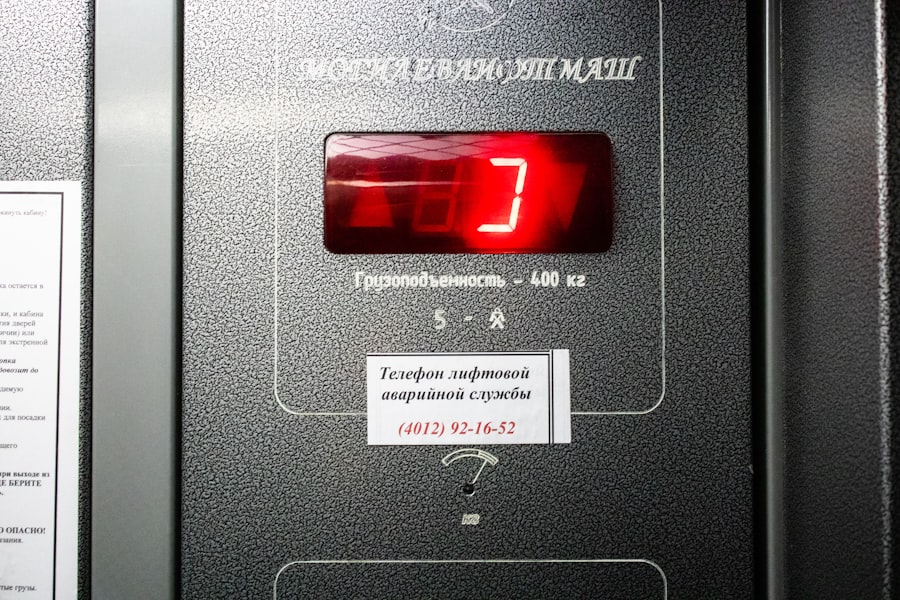Biometric technology has emerged as a transformative force in the realm of security and identification. By leveraging unique biological characteristics, such as fingerprints, facial recognition, and iris patterns, biometric systems provide a means of verifying identity that is both secure and efficient. The increasing reliance on digital systems and the growing need for robust security measures have propelled biometric technology into the spotlight.
As organizations seek to protect sensitive information and ensure secure access to facilities, the adoption of biometric solutions has become a strategic imperative. The evolution of biometric technology can be traced back to the early 20th century when fingerprinting was first used for criminal identification. Since then, advancements in technology have expanded the scope of biometrics beyond mere identification to include authentication processes that are integral to various applications.
Today, biometric systems are not only utilized in law enforcement but also in everyday consumer products, such as smartphones and laptops, where they serve as a convenient means of unlocking devices and authorizing transactions. This widespread adoption underscores the growing recognition of biometrics as a reliable method for enhancing security protocols across multiple sectors.
Key Takeaways
- Biometric technology uses unique physical or behavioral characteristics to identify individuals, providing a secure and convenient method of authentication.
- Types of biometric technology include fingerprint recognition, facial recognition, iris scanning, voice recognition, and hand geometry.
- Biometric technology enhances security by providing accurate and reliable identification, reducing the risk of unauthorized access and fraud.
- Various industries, including finance, healthcare, and government, are implementing biometric technology to improve security and streamline processes.
- Challenges and concerns with biometric technology include privacy issues, potential data breaches, and the need for ethical considerations in its use.
Types of Biometric Technology
Biometric technology encompasses a diverse array of methods for identifying individuals based on their unique physiological or behavioral traits. Among the most common types are fingerprint recognition, facial recognition, iris recognition, voice recognition, and palm vein recognition. Fingerprint recognition remains one of the oldest and most widely used forms of biometric identification.
It relies on the distinct patterns of ridges and valleys found on an individual’s fingertips, which are captured and compared against stored templates for verification. Facial recognition technology has gained significant traction in recent years, particularly with the advent of artificial intelligence and machine learning algorithms that enhance its accuracy. This method analyzes facial features such as the distance between the eyes, the shape of the jawline, and other unique characteristics to create a digital representation of a person’s face.
Iris recognition, which examines the intricate patterns in the colored part of the eye, offers another highly accurate biometric method. It is often employed in high-security environments due to its low false acceptance rate. Voice recognition technology utilizes unique vocal characteristics to identify individuals based on their speech patterns.
This method is particularly useful in applications such as phone banking and virtual assistants, where voice commands are used for authentication. Palm vein recognition is a less common but increasingly popular method that scans the unique patterns of veins in a person’s palm. This technology is particularly advantageous in environments where contactless identification is preferred, as it minimizes the risk of cross-contamination.
Benefits of Biometric Technology in Security

The integration of biometric technology into security systems offers numerous advantages that enhance both safety and efficiency. One of the primary benefits is the increased accuracy in identity verification. Unlike traditional methods such as passwords or PINs, which can be forgotten or stolen, biometric traits are inherently unique to each individual.
This uniqueness significantly reduces the likelihood of unauthorized access, making biometric systems a formidable barrier against identity theft and fraud. Moreover, biometric technology streamlines the authentication process, providing a seamless user experience.
This convenience encourages users to adopt more secure practices, ultimately leading to improved overall security hygiene.
Another notable benefit is the ability to integrate biometric technology with existing security infrastructure. Many organizations can enhance their current systems by incorporating biometric solutions without overhauling their entire security framework. For example, adding facial recognition cameras to an existing surveillance system can provide real-time monitoring capabilities while leveraging pre-existing hardware.
This adaptability makes biometric technology an attractive option for organizations looking to bolster their security measures without incurring excessive costs.
Implementing Biometric Technology in Various Industries
| Industry | Benefits of Biometric Technology | Challenges |
|---|---|---|
| Healthcare | Enhanced patient identification, improved security, reduced fraud | Privacy concerns, implementation costs |
| Banking and Finance | Stronger authentication, fraud prevention, improved customer experience | Integration with legacy systems, regulatory compliance |
| Retail | Enhanced security, personalized customer experience, reduced fraud | Customer acceptance, cost of implementation |
| Government | Improved security, accurate identification, reduced identity theft | Privacy concerns, large-scale deployment challenges |
The versatility of biometric technology allows for its implementation across a wide range of industries, each benefiting from enhanced security measures tailored to their specific needs. In the financial sector, banks and financial institutions have increasingly adopted biometric authentication methods to safeguard customer accounts and transactions. For instance, many banks now offer fingerprint or facial recognition options for mobile banking applications, allowing customers to securely access their accounts without relying on traditional passwords.
In healthcare, biometric technology plays a crucial role in patient identification and data security. Hospitals utilize fingerprint scanners or iris recognition systems to ensure that patients are accurately identified before receiving treatment or accessing their medical records. This not only enhances patient safety by preventing medical errors but also protects sensitive health information from unauthorized access.
Additionally, biometric systems can streamline administrative processes by reducing paperwork and improving efficiency in patient check-ins. The retail industry has also embraced biometric technology to enhance customer experiences and improve security measures. Some retailers have implemented facial recognition systems to analyze customer behavior and preferences, allowing for personalized marketing strategies while ensuring loss prevention through enhanced surveillance capabilities.
Furthermore, biometric payment systems are gaining traction, enabling customers to make purchases using their fingerprints or facial recognition instead of traditional payment methods.
Challenges and Concerns with Biometric Technology
Despite its numerous advantages, the implementation of biometric technology is not without challenges and concerns. One significant issue is the potential for privacy violations. As organizations collect and store sensitive biometric data, there is an inherent risk that this information could be misused or compromised.
High-profile data breaches have raised alarms about the security of biometric databases, leading to calls for stricter regulations governing data protection and privacy. Another challenge lies in the accuracy and reliability of biometric systems. While advancements in technology have improved performance, factors such as environmental conditions or physical changes can affect the accuracy of biometric recognition.
For example, changes in lighting can impact facial recognition systems, while injuries or alterations to fingerprints can hinder fingerprint scanners’ effectiveness. These limitations necessitate ongoing research and development to enhance the robustness of biometric technologies. Additionally, there are concerns regarding user acceptance and trust in biometric systems.
Many individuals may feel uncomfortable with the idea of their biometric data being collected and stored by organizations, fearing potential misuse or surveillance. Building public trust requires transparency about how biometric data is used and protected, as well as clear communication regarding consent and data ownership.
Future Trends in Biometric Technology

As technology continues to evolve, several trends are shaping the future landscape of biometric technology. One notable trend is the integration of artificial intelligence (AI) and machine learning into biometric systems. These technologies enhance the accuracy and efficiency of biometric recognition by enabling systems to learn from vast datasets and adapt to changing conditions over time.
For instance, AI algorithms can improve facial recognition accuracy by analyzing variations in lighting or angles during image capture. Another emerging trend is the development of multimodal biometric systems that combine multiple identification methods for enhanced security. By integrating different modalities—such as combining fingerprint scanning with facial recognition—organizations can create more robust authentication processes that mitigate the limitations associated with individual methods.
This approach not only increases accuracy but also provides redundancy in case one method fails. The rise of contactless biometric solutions is also gaining momentum, particularly in response to health concerns stemming from the COVID-19 pandemic. Technologies such as palm vein recognition or facial recognition that do not require physical contact are becoming increasingly popular in environments where hygiene is paramount.
This shift towards contactless solutions reflects a broader trend toward convenience and safety in user interactions with technology.
Ethical and Privacy Considerations in Biometric Technology
The ethical implications surrounding biometric technology are complex and multifaceted. One primary concern revolves around consent and individual autonomy. As organizations collect biometric data for identification purposes, it is essential that individuals provide informed consent regarding how their data will be used and stored.
Transparency about data collection practices fosters trust between organizations and users while ensuring that individuals retain control over their personal information. Privacy considerations also extend to data storage and protection measures. Organizations must implement robust security protocols to safeguard biometric data from unauthorized access or breaches.
This includes encryption techniques, secure storage solutions, and regular audits to ensure compliance with data protection regulations such as GDPR or CCPFailure to adequately protect biometric data not only jeopardizes individual privacy but can also result in significant legal repercussions for organizations. Furthermore, there is an ongoing debate about the potential for surveillance and profiling enabled by biometric technology. The ability to track individuals through facial recognition systems raises concerns about mass surveillance practices that infringe upon civil liberties.
Striking a balance between security needs and individual rights requires careful consideration of ethical frameworks that prioritize human dignity while addressing legitimate security concerns.
The Role of Biometric Technology in Enhancing Security
Biometric technology stands at the forefront of modern security solutions, offering innovative methods for identity verification that enhance safety across various sectors. Its unique ability to leverage individual biological traits provides a level of accuracy and convenience that traditional methods cannot match. As organizations continue to adopt these technologies, they must navigate challenges related to privacy, ethical considerations, and public trust.
The future of biometric technology promises exciting advancements driven by AI integration, multimodal systems, and contactless solutions that cater to evolving user needs. However, it is imperative that stakeholders prioritize ethical practices and robust data protection measures to ensure that the benefits of biometrics are realized without compromising individual rights or privacy. As we move forward into an increasingly digital world, biometrics will undoubtedly play a pivotal role in shaping secure environments while fostering trust between individuals and organizations.
Biometrics is a fascinating field that involves the use of unique physical characteristics for identification and authentication purposes. One related article that delves into the philosophical aspects of identity and perception is “Exploring Husserl’s Philosophy: Essence, Intentionality, and Bracketing” which can be found here. This article discusses the concept of intentionality and how it relates to the essence of objects and experiences. It offers a thought-provoking perspective on the nature of consciousness and self-awareness, which are key components of biometric technology.





















+ There are no comments
Add yours